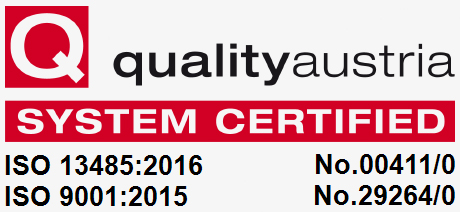QuantSeq for Ion Torrent Publications
Previous Products:
QuantSeq 3’ mRNA-Seq for Ion Torrent
Eamon Fitzgerald, Matthew C Sinton, Sara Wernig-Zorc, Nicholas M Morton, Megan C Holmes, James P Boardman, Amanda J Drake
Abstract
Early life stress during childhood is associated with a number of psychiatric disorders that manifest across the life course. Preterm birth is a profound stressor, and an important cause of cognitive impairment, as well as neurodevelopmental and psychiatric disorders. However, the mechanisms that link events during the early neonatal period with later functional problems are poorly understood. We developed a novel mouse model of early life stress (modified maternal separation; MMS) with specific relevance to preterm birth (PTB) and hypothesised it would affect the hypothalamic transcriptome and DNA methylome and impact on behaviour in adulthood. MMS consisted of repeatedly stimulating pups for 1.5 hours/day, whilst separated from their mother, from postnatal day (P)4-6. 3’ RNA sequencing and DNA methylation immunoprecipitation (meDIP) sequencing was performed on the hypothalamus at P6. Behaviour was assessed with the elevated plus and open field mazes, and in-cage monitoring at 3-4 months of age. Although MMS was only associated with subtle changes in gene expression there were widespread alterations in DNA methylation. Notably, differentially methylated regions were enriched for synapse-associated loci. MMS also resulted in hyperactivity in the elevated plus and open field mazes, but in-cage monitoring revealed that this was not representative of habitual hyperactivity. In conclusion we describe a novel model of early life stress with relevance to PTB, with marked effects on DNA methylation in the hypothalamus and with stress-specific hyperactivity in young adulthood. We suggest that these results have implications for the understanding of early life stress mediated effects on brain development.
Features QuantSeq 3′ mRNA-Seq Library Prep Kit for Ion Torrent
J. Feltham, S. Xi, S. Murray, M. Wouters, J. Urdiain-Arraiza, C. George, A. Townley, E. Roberts, R. Fisher, S. Liberatori, S. Mohammed, B. Kessler, J. Mellor
Abstract
The central dogma of molecular biology states that information flows from DNA to protein via RNA (Crick, 1970). This model is central to our understanding of biology but can lead to the assumption that changes in transcription and transcripts will inevitably lead to changes in protein levels, and so directly impact the metabolic and biosynthetic state of the cell. To test this assumption, we used a biological system characterised by genome-wide, cyclical changes in transcription, to assess whether changes in transcription are reflected in changes at the level of protein. We reveal that despite large changes in transcription at the majority of genes, there is little change in protein. This decoupling results from the slow rate of protein turnover. The changes protein activity we did observe were instead a reflection of the metabolic state of the cell, resulting from post-transcriptional modifications such as acetylation and phosphorylation, that in turn drive the cycling of processes such as transcription and ribosome biogenesis. Thus, transcriptional and transcript cycling reflects rather than drives the metabolic and biosynthetic changes during biological rhythms. We suggest that caution is needed when inferring the activity of biological processes from transcript data, as this reflects but does not predict a cell’s state.
Features QuantSeq 3′ mRNA-Seq Library Prep Kit for Ion Torrent
Struan C Murray, Philipp Lorenz, Françoise S Howe, Meredith Wouters, Thomas Brown, Shidong Xi, Harry Fischl, Walaa Khushaim, Joseph Regish Rayappu, Andrew Angel, Jane Mellor
Abstract
H3K4me3 is a near-universal histone modification found predominantly at the 5’ region of genes, with a well-documented association with gene activity. H3K4me3 has been ascribed roles as both an instructor of gene expression and also a downstream consequence of expression, yet neither has been convincingly proven on a genome-wide scale. Here we test these relationships using a combination of bioinformatics, modelling and experimental data from budding yeast in which the levels of H3K4me3 have been massively ablated. We find that loss of H3K4me3 has no effect on the levels of nascent transcription or transcript in the population. Moreover, we observe no change in the rates of transcription initiation, elongation, mRNA export or turnover, or in protein levels, or cell-to-cell variation of mRNA. Loss of H3K4me3 also has no effect on the large changes in gene expression patterns that follow galactose induction. Conversely, loss of RNA polymerase from the nucleus has no effect on the pattern of H3K4me3 deposition and little effect on its levels, despite much larger changes to other chromatin features. Furthermore, large genome-wide changes in transcription, both in response to environmental stress and during metabolic cycling, are not accompanied by corresponding changes in H3K4me3. Thus, despite the correlation between H3K4me3 and gene activity, neither appear to be necessary to maintain levels of the other, nor to influence their changes in response to environmental stimuli. When we compare gene classes with very different levels of H3K4me3 but highly similar transcription levels we find that H3K4me3-marked genes are those whose expression is unresponsive to environmental changes, and that their histones are less acetylated and dynamically turned-over. Constitutive genes are generally well-expressed, which may alone explain the correlation between H3K4me3 and gene expression, while the biological role of H3K4me3 may have more to do with this distinction in gene class.
Features QuantSeq 3′ mRNA-Seq Library Prep Kit for Ion Torrent
Harry Fischl, Jonathan Neve, Zhiqiao Wang, Radhika Patel, Alastair Louey, Bin Tian, Andre Furger
Abstract
Alternative cleavage and polyadenylation (APA) can occur at more than half of all human genes, greatly enhancing the cellular repertoire of mRNA isoforms. As these isoforms can have altered stability, localisation and coding potential, deregulation of APA can disrupt gene expression and this has been linked to many diseases including cancer progression. How APA generates cancer-specific isoform profiles and what their physiological consequences are, however, is largely unclear. Here we use a subcellular fractionation approach to determine the nuclear and cytoplasmic APA profiles of successive stages of colon cancer using a cell line-based model. Using this approach, we show that during cancer progression specific APA profiles are established. We identify that overexpression of hnRNPC has a critical role in the establishment of APA profiles characteristic for metastatic colon cancer cells, by regulating poly(A) site selection in a subset of genes that have been implicated in cancer progression including MTHFD1L.
Features QuantSeq 3′ mRNA-Seq Library Prep Kit for Ion Torrent
Elisa De Crignis, Fabrizia Carofiglio, Panagiotis Moulos, Monique M.A. Verstegen, Shahla Romal, Mir Mubashir Khalid, Farzin Pourfarzad, Christina Koutsothanassis, Helmuth Gehart, Tsung Wai Kan, Robert-Jan Palstra, Charles Boucher, Jan M.N. Ijzermans, Meritxell Huch, Sylvia F. Boj, Robert Vries, Hans Clevers, Luc van der Laan, Pantelis Hatzis, Tokameh Mahmoudi
Abstract
The molecular events that drive Hepatitis B virus (HBV)-mediated transformation and tumorigenesis have remained largely unclear, due to the absence of a relevant primary model system. Here we interrogate the potential of human liver organoids as a platform for modeling HBV infection and related tumorigenesis. We show that organoids derived from HBV-infected patients display an aberrant early cancer gene signature, which clusters with the HCC cohort on the TCGA LIHC dataset and away from healthy liver tissue. Furthermore, we demonstrate HBV infection in healthy donor liver organoids after challenge with recombinant virus or HBV infected patient serum. Ex vivo infected liver organoids produced cccDNA, expressed intracellular HBV RNA and proteins, and produced infectious HBV. HBV replication supported by ex vivo infected liver organoids was blocked by treatment with Tenofovir, highlighting the potential of this model system as a primary differentiated hepatocyte platform for HBV drug screening. Interestingly, transgenic organoids exogenously over expressing the HBV receptor NTCP by lentiviral transduction are not more susceptible to HBV, suggesting the necessity for additional host factors for efficient infection. Finally, we generated transgenic organoids harboring integrated HBV, representing a long-term culture system also suitable for viral production and the study of HBV transcription.
Features QuantSeq 3′ mRNA-Seq Library Prep Kit for Ion Torrent
Axelle Marchant, Angel F. Cisneros, Alexandre K Dubé, Isabelle Gagnon-Arsenault, Diana Ascencio, Honey A. Jain, Simon Aubé, Chris Eberlein, Daniel Evans-Yamamoto, Nozomu Yachie, Christian R Landry
Abstract
Gene duplication is a driver of the evolution of new functions. The duplication of genes encoding homomeric proteins leads to the formation of homomers and heteromers of paralogs, creating new complexes after a single duplication event. The loss of these heteromers may be required for the two paralogs to evolve independent functions. Using yeast as a model, we find that heteromerization is frequent among duplicated homomers and correlates with functional similarity between paralogs. Using in silico evolution, we show that for homomers and heteromers sharing binding interfaces, mutations in one paralog can have structural pleiotropic effects on both interactions, resulting in highly correlated responses of the complexes to selection. Therefore, heteromerization could be preserved indirectly due to selection for the maintenance of homomers, thus slowing down functional divergence between paralogs. We suggest that paralogs can overcome the obstacle of structural pleiotropy by regulatory evolution at the transcriptional and post-translational levels.
Features QuantSeq 3′ mRNA-Seq Library Prep Kit for Ion Torrent
Vasiliki Koliaraki, Niki Chalkidi, Ana Henriques, Christos Tzaferis, Apostolos Polykratis, Ari Waisman, Werner Muller, David J. Hackam, Manolis Pasparakis, George Kollias
Abstract
MyD88, an adaptor molecule downstream of innate pathways, plays a significant tumor-promoting role in sporadic intestinal carcinogenesis of the Apcmin/+ model, which carries a mutation in the Apc gene. Here, we show that deletion of MyD88 in intestinal mesenchymal cells (IMCs) significantly reduces tumorigenesis in this model. This phenotype is associated with decreased epithelial cell proliferation, altered inflammatory and tumorigenic immune cell infiltration, and modified gene expression similar to complete MyD88 knockout mice. Genetic deletion of TLR4, but not interleukin-1 receptor (IL-1R), in IMCs led to altered molecular profiles and reduction of intestinal tumors similar to the MyD88 deficiency. Ex vivo analysis in IMCs indicated that these effects could be mediated through downstream signals involving growth factors and inflammatory and extracellular matrix (ECM)-regulating genes, also found in human cancer-associated fibroblasts (CAFs). Our results provide direct evidence that during tumorigenesis, IMCs and CAFs are activated by innate TLR4/MyD88-mediated signals and promote carcinogenesis in the intestine.
Features QuantSeq 3′ mRNA-Seq Library Prep Kit for Ion Torrent
Franziska Schmidt, Katja Dahlke, Arvind Batra, Jacqueline Keye, Hao Wu, Marie Friedrich, Rainer Glauben, Christiane Ring, Gunnar Loh, Monika Schaubeck Hubert Hackl, Zlatko Trajanoski, Michael Schumann, Anja A Kühl, Michael Blaut, Britta Siegmund
Abstract
Background and Aims
Contact with distinct microbiota early in life has been shown to educate the mucosal immune system, hence providing protection against immune-mediated diseases. However, the impact of early versus late colonization with regard to the development of the intestinal macrophage compartment has not been studied so far.
Methods
Germ-free mice were colonized with specific-pathogen-free [SPF] microbiota at the age of 5 weeks. The ileal and colonic macrophage compartment were analysed by immunohistochemistry, flow cytometry, and RNA sequencing 1 and 5 weeks after colonization and in age-matched SPF mice, which had had contact with microbiota since birth. To evaluate the functional differences, dextran sulfate sodium [DSS]-induced colitis was induced, and barrier function analyses were undertaken.
Results
Germ-free mice were characterized by an atrophied intestinal wall and a profoundly reduced number of ileal macrophages. Strikingly, morphological restoration of the intestine occurred within the first week after colonization. In contrast, ileal macrophages required 5 weeks for complete restoration, whereas colonic macrophages were numerically unaffected. However, following DSS exposure, the presence of microbiota was a prerequisite for colonic macrophage infiltration. One week after colonization, mild colonic inflammation was observed, paralleled by a reduced inflammatory response after DSS treatment, in comparison with SPF mice. This attenuated inflammation was paralleled by a lack of TNFα production of LPS-stimulated colonic macrophages from SPF and colonized mice, suggesting desensitization of colonized mice by the colonization itself.
Conclusions
This study provides the first data indicating that after colonization of adult mice, the numeric, phenotypic, and functional restoration of the macrophage compartment requires the presence of intestinal microbiota and is time dependent.
Features QuantSeq 3′ mRNA-Seq Library Prep Kit for Ion Torrent
Pajareeya Songserm, Aphichart Karnchanatat, Sitanan Thitiprasert, Somboon Tanasupawat, Suttichai Assabumrungrat, Shang-Tian Yang, Nuttha Thongchul
Abstract
The metabolic responses of Aspergillus terreus NRRL1960 to stress conditions (low dissolved oxygen and pH with limited nitrogen and phosphate) in the two-phase fermentation were investigated in this study. The fermentation kinetics suggested that itaconate production was suppressed under low dissolved oxygen (DO) concentrations. A slight change in pH caused a significant change in itaconate production. The transcriptomic data revealed that under low DO concentration, the glycolytic pathway was uncoupled from the oxidative phosphorylation, resulting in the activation of substrate-level phosphorylation as an alternative route for ATP regeneration. The downregulation of pdh genes, the genes encoding ATP synthase and succinate dehydrogenase, confirmed the observation of the uncoupling of the oxidative TCA cycle from glycolysis. It was found that the upregulation of pyc resulted in a large pool of oxaloacetate in the cytosol. This induced the conversion of oxaloacetate to malate. The upregulation of the gene encoding fumarate hydratase with the subsequent formation of fumarate was found to be responsible for the regeneration of NADPH and ATP under the condition of a low dissolved oxygen level. The large pool of oxaloacetate drove itaconic acid production also via the oxidative TCA cycle. Nevertheless, the downregulation of ATP synthase genes resulted in the deficiency of the proton-pumping H+ ATPase and the subsequent stress due to the failure to maintain the physiological pH. This resulted in itaconate production at a low titer. The fermentation kinetics and the transcriptomic data provided in this study can be used for further process optimization and control to improve itaconate production performance.
Features QuantSeq 3′ mRNA-Seq Library Prep Kit for Ion Torrent
Nicola Hall
Abstract
Investigating the cellular processes anti-ageing compounds interact with can identify genes and pathways involved in ageing. The macrolide lactone FK506 was identified in a phenotypic screen as extending lifespan in yeast and C. elegans through an unknown mechanism. FK506 also ameliorates neurodegeneration and age-related weight gain in rodents. Here, the mechanism of action of FK506 has been investigated in two experimental systems: C. elegans and 3T3-L1 mouse adipocytes.
As the general mechanisms of ageing are well conserved between C. elegans and mammals, C. eleganshas been used to understand how FK506 acts at an organismal level. Firstly, the result of the phenotypic screen was confirmed. FK506 treatment induced lifespan extension in C. elegans in the presence of population crowding stress, but not in the absence of crowding. FK506 treatment inhibited neither E. coli OP50 growth nor C. elegans pharyngeal pumping, demonstrating that FK506 did not induce dietary restriction to extend lifespan. FK506 treatment increased C. elegans thrashing and pharynx pumping rates in early adulthood and delayed accumulation of gut bacteria, showing that FK506 extended healthspan. A transcriptome analysis of FK506-treated C. elegans allowed the identification of transcripts whose levels change and potential pathways by which FK506 manifests its effect. To explore this and to identify potential targets of FK506, the cellular functions required for FK506 to extend C. elegans lifespan and healthspan were investigated using RNA-seq, RNAi, genetic mutation and co-treatment with small molecule inhibitors and inducers. Interestingly, FK506 was found to have different mechanisms of action on lifespan and healthspan. The mechanism of FK506 on C. elegans thrashing rate was DAF-16 dependent, did not require population crowding stress, had a partial interaction with FUdR and autophagy, and may involve Ca2+ flux. The mechanism of FK506-induced C. elegans lifespan extension overlapped with dietary restriction and was dependent on calcineurin, TOR-independent regulation of autophagy and the presence of population crowding stress.
FK506 may modulate body weight by influencing metabolism and/or acting on adipocytes directly. FK506-treated aged 3T3-L1 adipocytes accumulated significantly less lipid, indicating that FK506 acts directly on adipocytes. RNA-seq of FK506-treated adipocytes found that translation-associated RNAs were upregulated whilst RNAs associated with lipid metabolism were downregulated. An ER-localised FK506-binding protein was up regulated in both C. elegans and 3T3-L1 adipocytes, fkb-4 and Fkbp2 respectively.
In conclusion, FK506 has been confirmed as a potential anti-ageing treatment, through its ability to extend lifespan and healthspan in C. C. elegans. In addition, FK506 has also been shown to act directly on mouse adipocytes, resulting in a reduction in lipid accumulation. This action could explain how FK506 caused weight loss in obese aged rats, restoring body mass to a healthy adult weight.
Features QuantSeq 3′ mRNA-Seq Library Prep Kit for Ion Torrent
Zlatko Trajanoski, Mirjana Efremova, Victoria Klepsch, Pornpimol Charoentong, Francesca Finotello, Dietmar Rieder, Hubert Hackl, Natasch Hermann-Kleiter, Gottfried Baier, Anne Krogsdam
Abstract
Background:
The cancer immunoediting hypothesis postulates a dual role of the immune system: protecting the host by eliminating tumor cells, and shaping the developing tumor by editing the cancer genome. However, to what extent immunoediting is shaping the cancer genome in common malignancies is still a matter of debate. Moreover, the impact of cancer immunotherapy with checkpoint blockers on modulating immunoediting remains largely unexplored.
Results:
Here we employed a mouse model of colorectal cancer (CRC), next-generation sequencing, and computational analyses to elucidate the impact of evolutionary and immune-related forces on editing the tumor. We first carried out genomic and transcriptomic analyses of a widely-used model, MC38 cell line and show that this is a valid model for hypermutated and microsatellite-unstable CRC. Analyses of the data from longitudinal samples of wild type and immunodeficient RAG1 knockout mice transplanted with MC38 cells revealed that upregulation of checkpoint molecules and infiltration of Tregs are the major tumor escape mechanisms. Strikingly, the impact of neutral evolution on sculpting the tumor outweighed immunoediting by T cell dependent and T cell independent mechanisms in the progressing tumors. We also show that targeting the PD-1/PD-L1 pathway potentiated immunoediting and rendered tumors more homogeneous.
Conclusions:
In summary, our study demonstrates that neutral evolution is the major force that sculpts the tumor during progression, and that checkpoint blockade effectively enforces T cell dependent immunoselective pressure in this model. The results have important implication for basic research studies on the mechanisms of resistance to checkpoint blockade and for clinical translation.
Features QuantSeq 3′ mRNA-Seq Library Prep Kit for Ion Torrent




